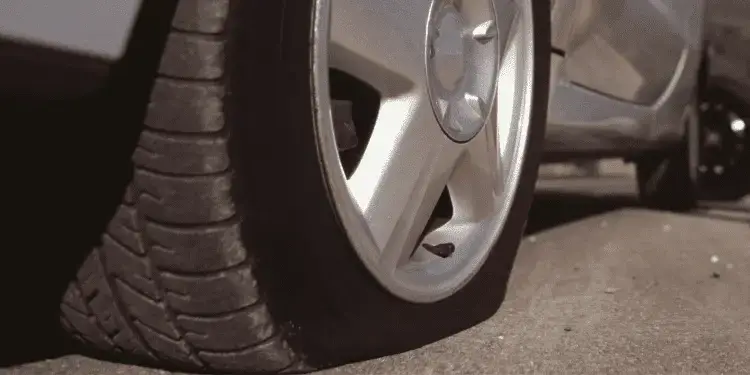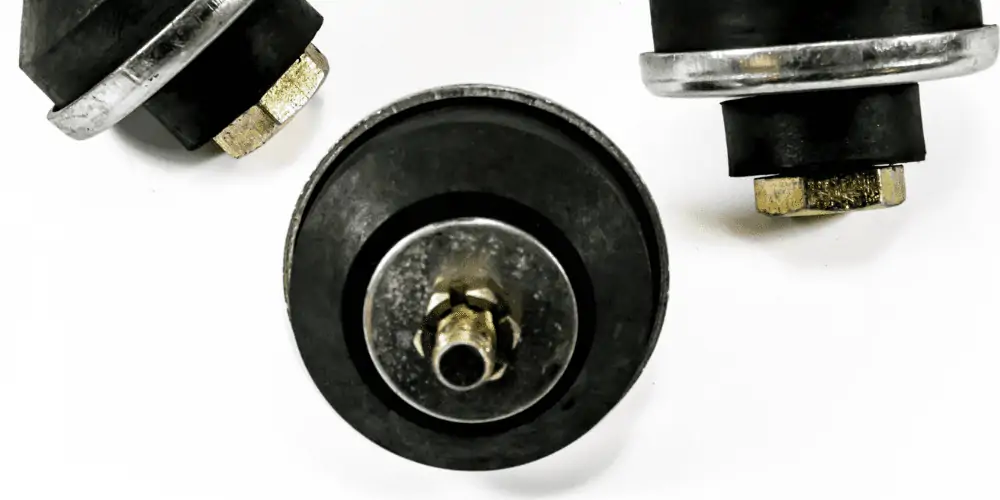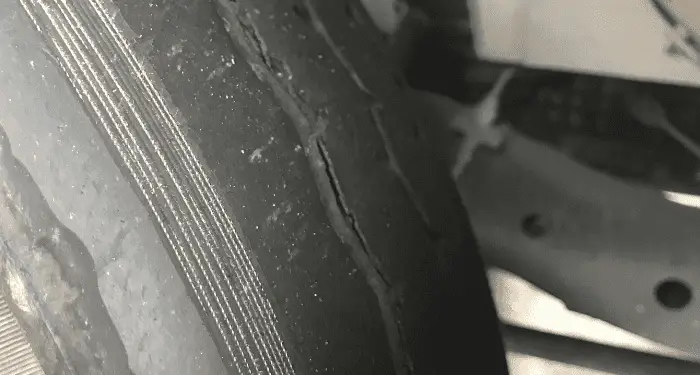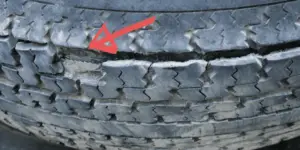When driving along at high speeds, it can be really worrying if your car is floating or feels unstable.
Here we will explore all the reasons why this could happen, from external factors to issues with your car’s components.
Briefly though. The three main causes are;
The road has tramlines, tire pressure is too low, or the bushings are worn, especially on the control arm.
Below, we will look into the details of each, along with exploring the less common causes.
Tramlines
So what are Tramlines on the road?
Tramlines are small smooth indentations on the road surface caused by car tires wearing out certain parts of the road more often than others. We are only talking about indentations of a couple of mm here, which are rarely noticeable to the eye.
This only occurs on fast roads like highways in the States or motorways in the UK.
This isn’t an issue on slower roads because cars often have to maneuver away from the sidewalk to pass by parked vehicles or turn left or right at traffic lights or roundabouts.
Simply put, if a car is driven on the tramlines, it can feel unresponsive if you turn the steering wheel slightly at high speeds.
A good indication is to drive on a different highway or motorway and see if you still have the same issue. It’s unlikely that all the fast roads you drive on we’ll have tram lines on them.
Therefore, if you experience the car being unstable at higher speeds on all roads, it’s likely to be a mechanical issue rather than a road condition issue.
Tire Pressure
I’ve been guilty of overinflating my tires by 2 or 3 PSI because I thought that it wouldn’t make much difference to the feel of the car, but it may mean that I wouldn’t have to re-inflate the tires as often.
The bad news is that it is especially at higher speeds; your car will become unstable if the tire pressure isn’t exact. Another point to remember is that people often inflate all the tires at the same PSI. Why this is a mistake, you should always refer to the car manufacturers’ guidelines on tire pressure as tire pressure often differs between the front and the rear tires.

Tire Pressure Increase. Even a small decrease can have a bad effect. Don’t assume the front and rear pressure are the same.
Active Suspension
Some cars have active suspension or electronic damping suspension especially higher-end sports cars.
Computers set up these systems and generally work very well at high speeds, ensuring cars feel rock solid on the road.
However, some drivers complain that their car feels that it has been set up wrong for the conditions and that there is very little they can do to put the situation right.
If your car feels twitchy and you have a high-level sports car, it is worth going back to the manufacturer or the car dealership and asking them to check the program to ensure the ECU is reading it correctly.
There’s little worse than having a high high-performance sports car, only not being able to drive it as you want because it feels unstable.
Shocks and Struts
Your car’s suspension ensures your car remains stable on the road. When you turn, more weight is put on one side of the car, specifically one corner. A damaged strut or shock will make your car feel very unstable.

A quick check would be to look for signs of leakage to see if you can see any lubricant leaking from the shock. Another check is to press down hard on each corner of the car and see how long it takes to settle back into position. If you find that one corner takes longer to bounce back and settle than the other three, this indicates a problem with that shock.
Sway Bars
Most modern cars come with sway bars. Some high-performance vehicles have two. Their job is to keep the car tight and taught on the road but at high speeds, especially where the surface isn’t pristine. A loose sway bar can have the opposite effect and cause the car to feel unstable when going fast.
Suspension
Is a possibility that your steering or suspension system may be faulty as well. Bushings often wear, and when they do, they can cause looseness and a twitchy feel at higher speeds. Also, ball joints and tie rod ends are prone to wear and tear, and speed may bring the symptoms to the surface.
Broken Motor Mounts
Your car’s engine is the heaviest part, and it is bolted into the chassis by motor mounts. If you feel the car becomes unstable at high speeds when you are weaving in and out of traffic is possible that your motor mounts or at least one of them may be faulty.

Because the engine weighs so heavily, even a slight looseness in one motor mount makes the engine shift position as you move the steering wheel.
This is a bit of a long shot, but if you have checked the road conditions, tires, and suspension, this may be the cause.
Rear Spoiler and Body Kits
If your car has a rear spoiler or other market body parts is worth checking that these are intact. Any signs of cracks or not being fitted correctly can cause the air to flow around your car less aerodynamically.
This is a nice cheap fix if there is an issue, and it’s easily noticeable visually. Some people fit rear spoilers to their cars when there is no need to. This is quite a common modification.
This can cause the car to perform badly and reduce fuel economy as it wasn’t designed to be fitted to the car in the first place.
Many visitors read this article next: 9 Best Ways To Make Your Car Go Faster [Budget Guide]
Vehicle Pulling
If your car pulls to the left or the right at high speeds, this indicates a wheel alignment issue. This is common if you have recently hit a pothole or a curb.
However, it is true that this will be noticeable at low speeds to high speeds and can be exacerbated.
Car Sounds Like It’s Dragging But Nothing Is – [FULL GUIDE]
Tire Tread
We’ve touched on having the correct air pressure inside your tires being a major factor in your car’s instability; however, if your tire is wearing unevenly, this indicates that you need to have your tires balanced.
Unevenly balanced tires can cause the tires to be twitchy.

Check your tires to ensure that they are not more worn in the center part of the tire, as this indicates that they may be overinflated, which can give the floaty feeling at higher speeds as the car is using just a small section of the center tread of the tire.
In conclusion
The three main factors affecting your car’s handling at higher speeds are:
- Road Conditions
- Poor tire pressure and
- Bushings being worn, especially the front control arm bushings.
It is never worth driving your car at high speeds if you feel you’re not completely controlling it.
Generally, the repair cost is small, but it is not worth the risk of driving when you do not have full confidence in your vehicle.





![Car Wobbles At Low Speeds - [Troubleshooter Guide] inflating-tire-on-balancing-machine](https://carzaza.com/wp-content/uploads/2023/12/inflating-tire-on-balancing-machine-300x150.png)






